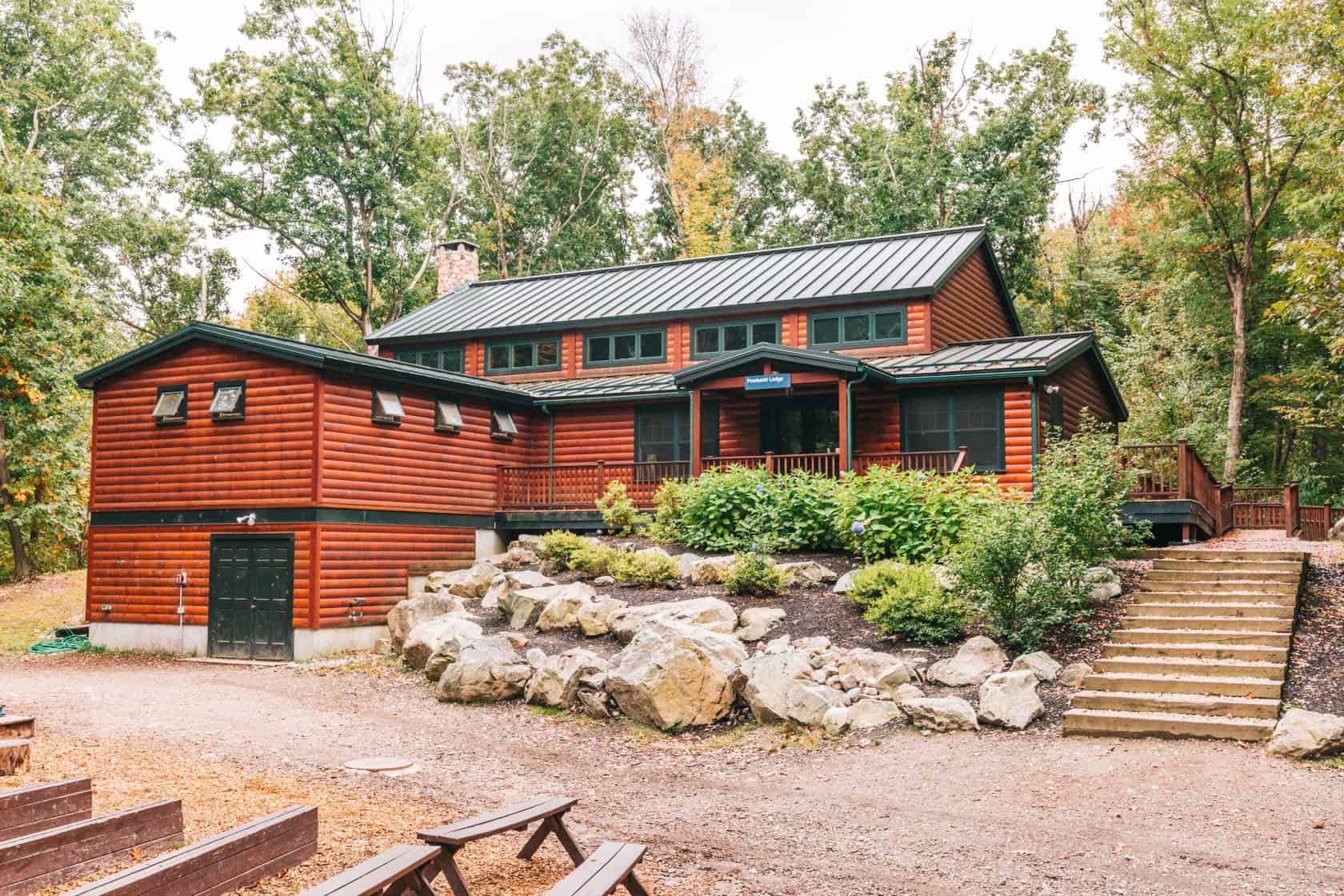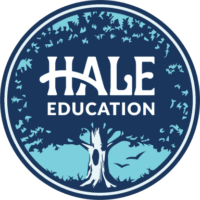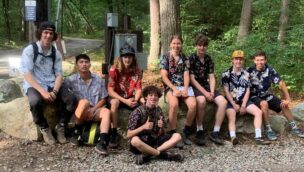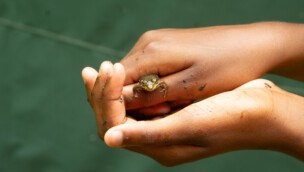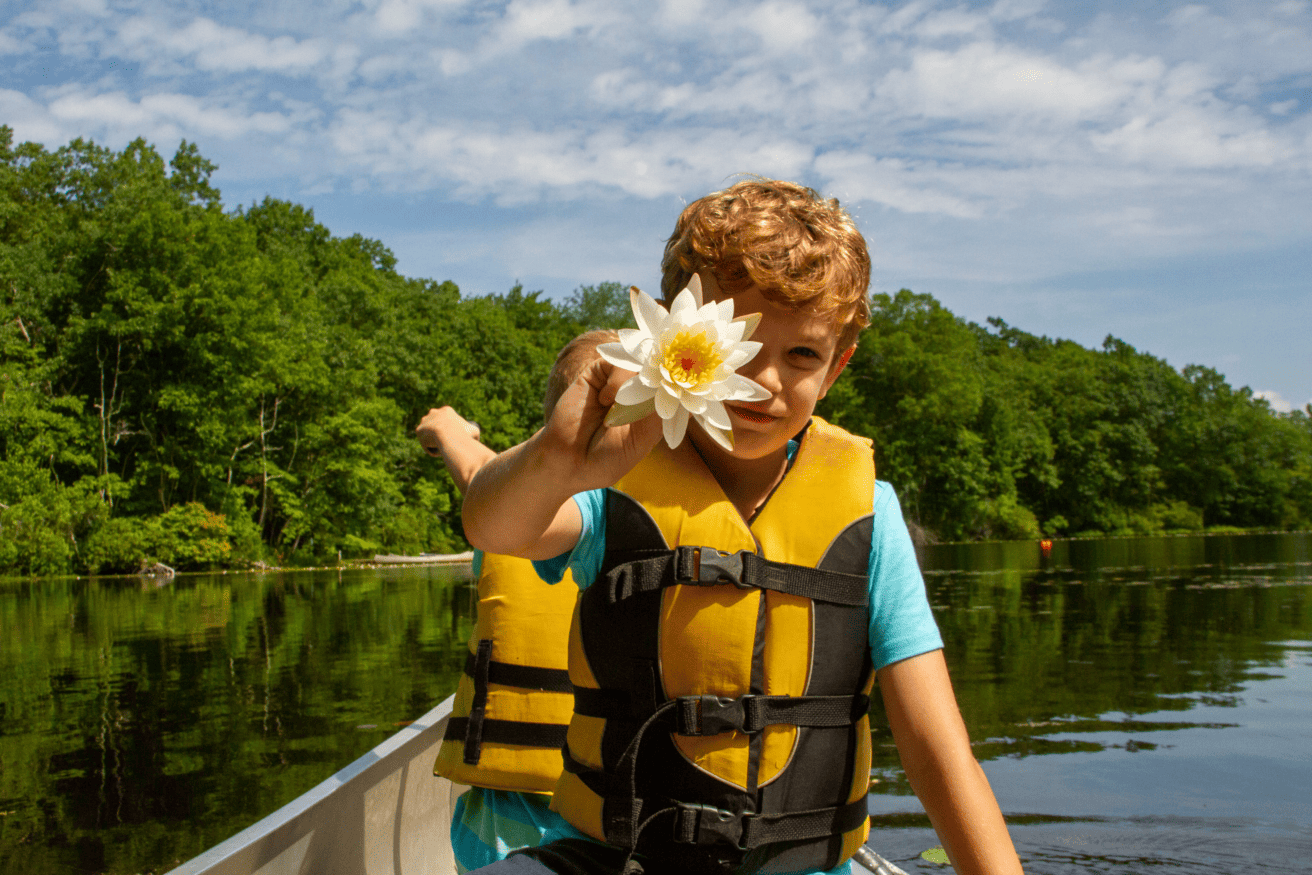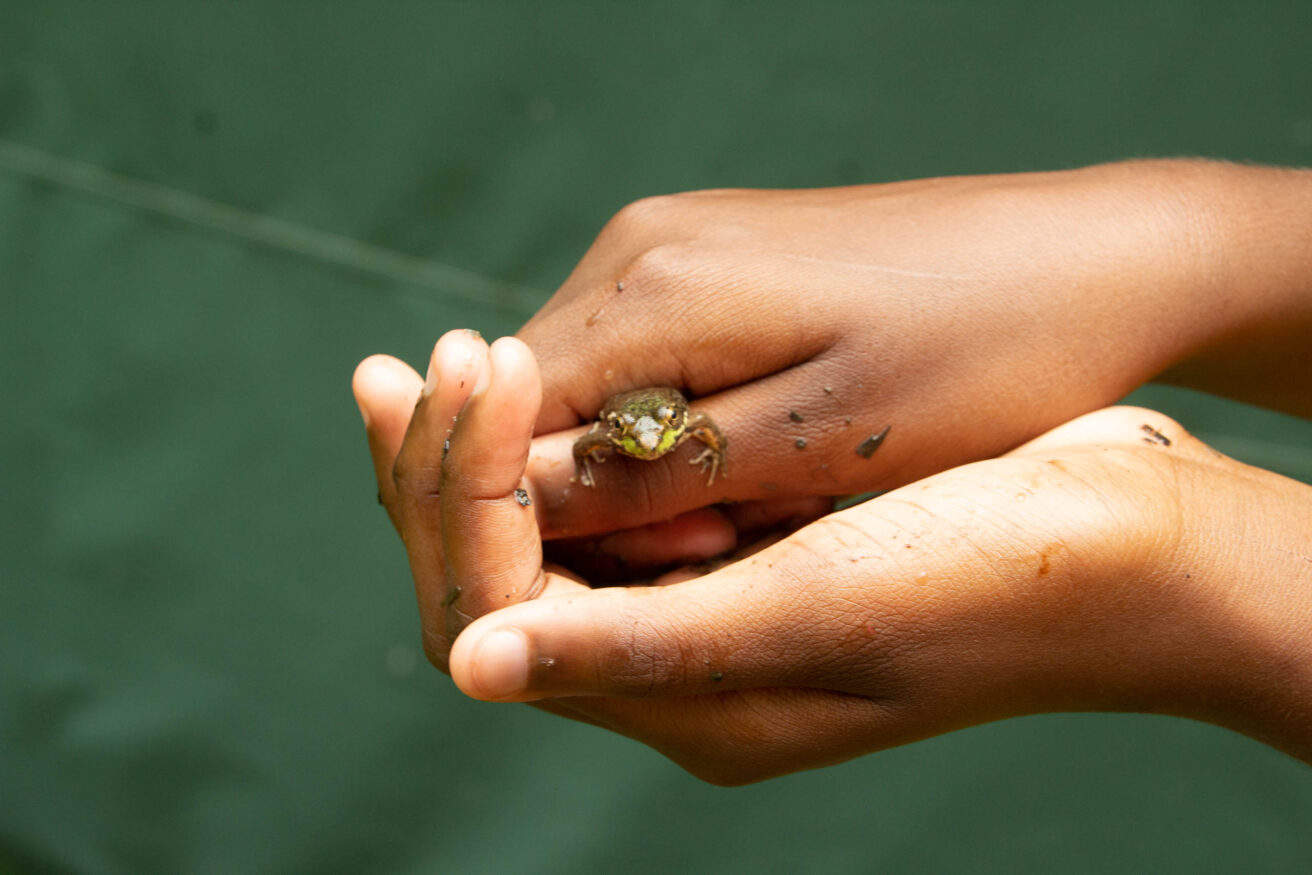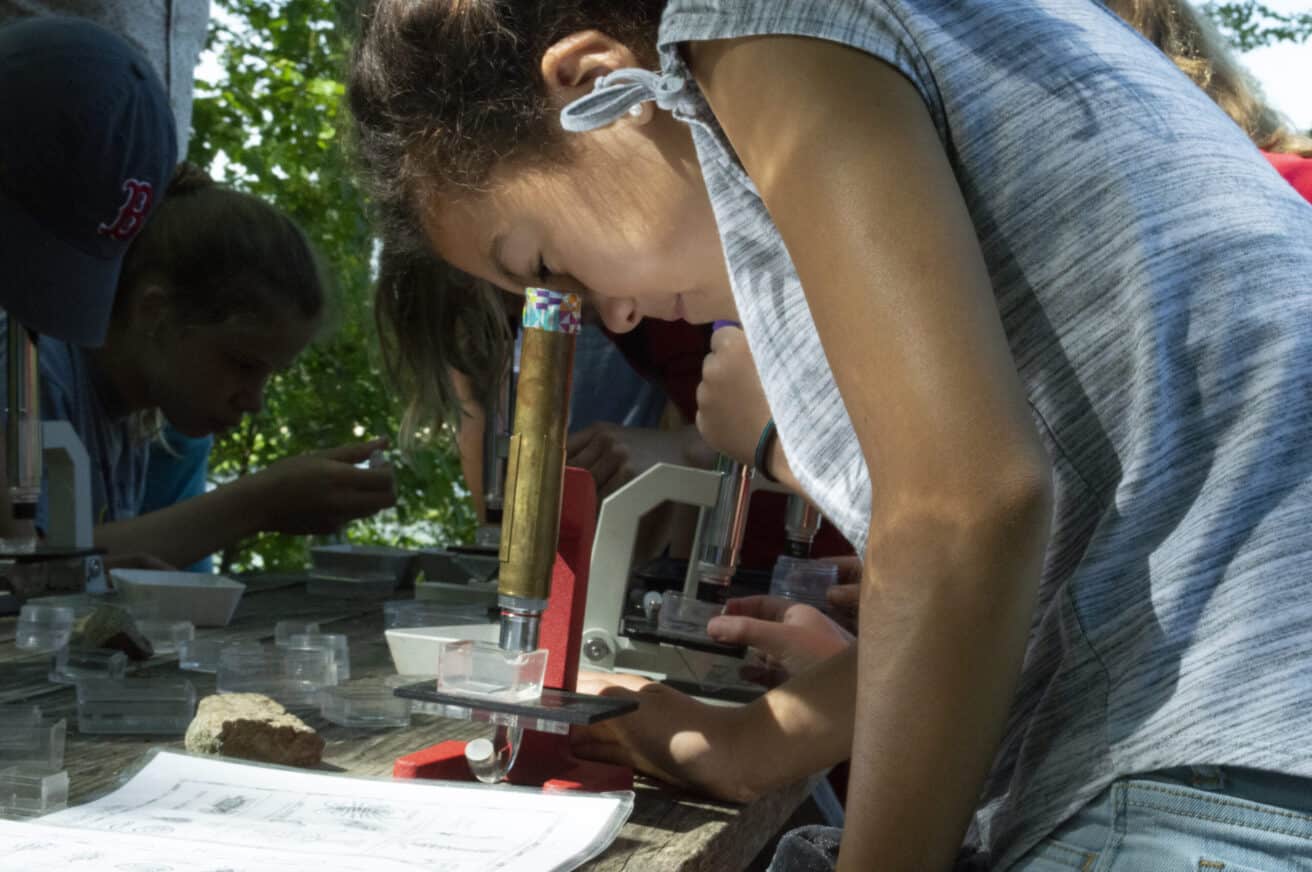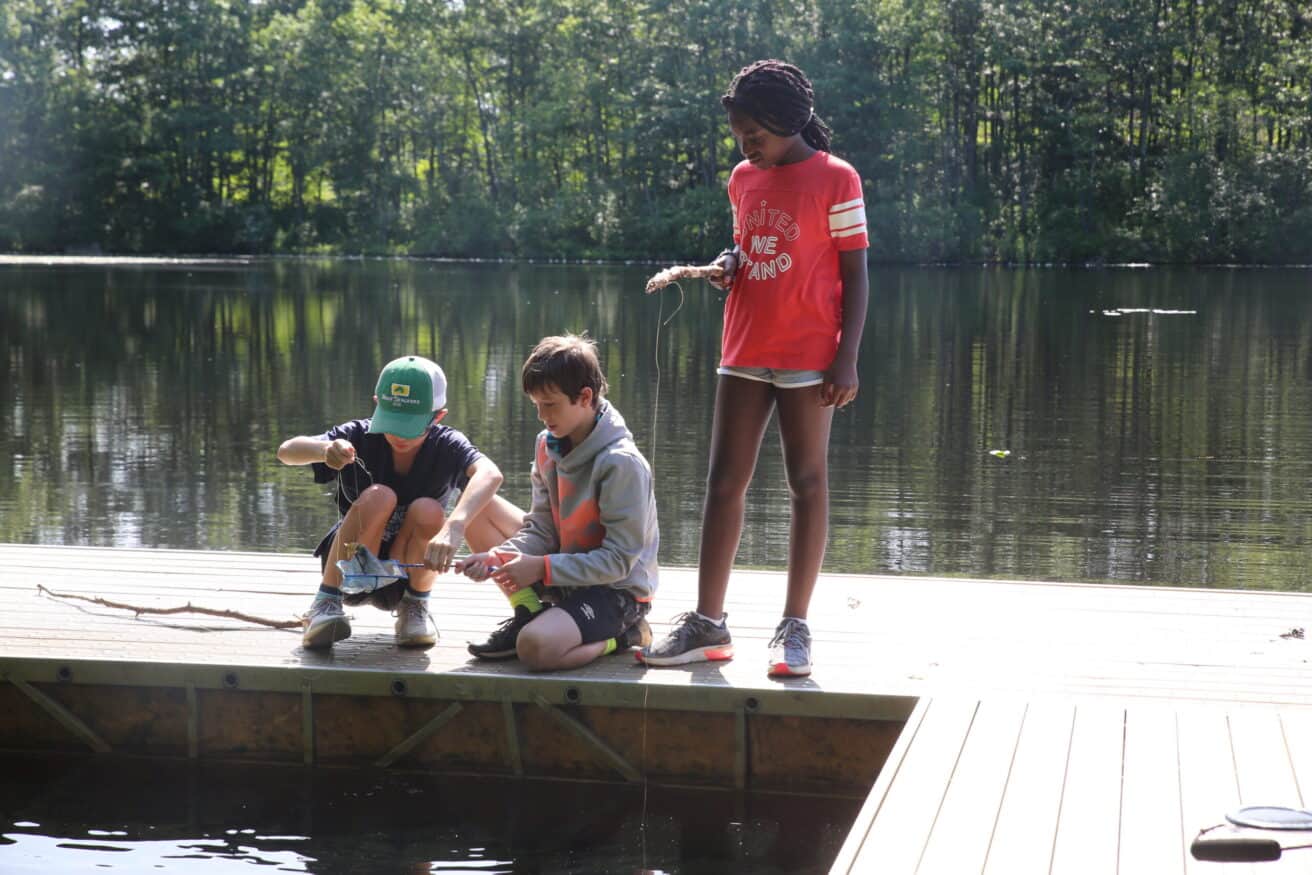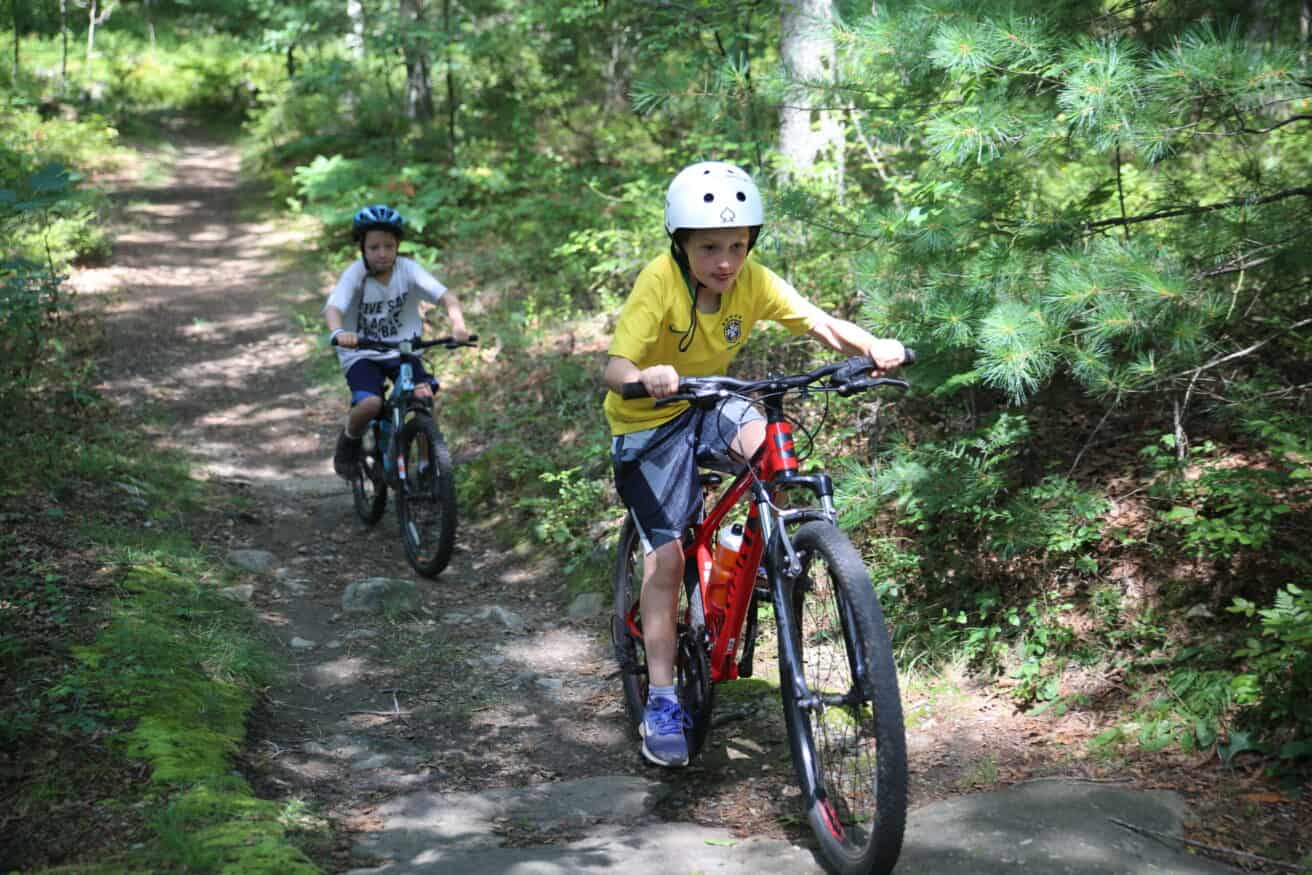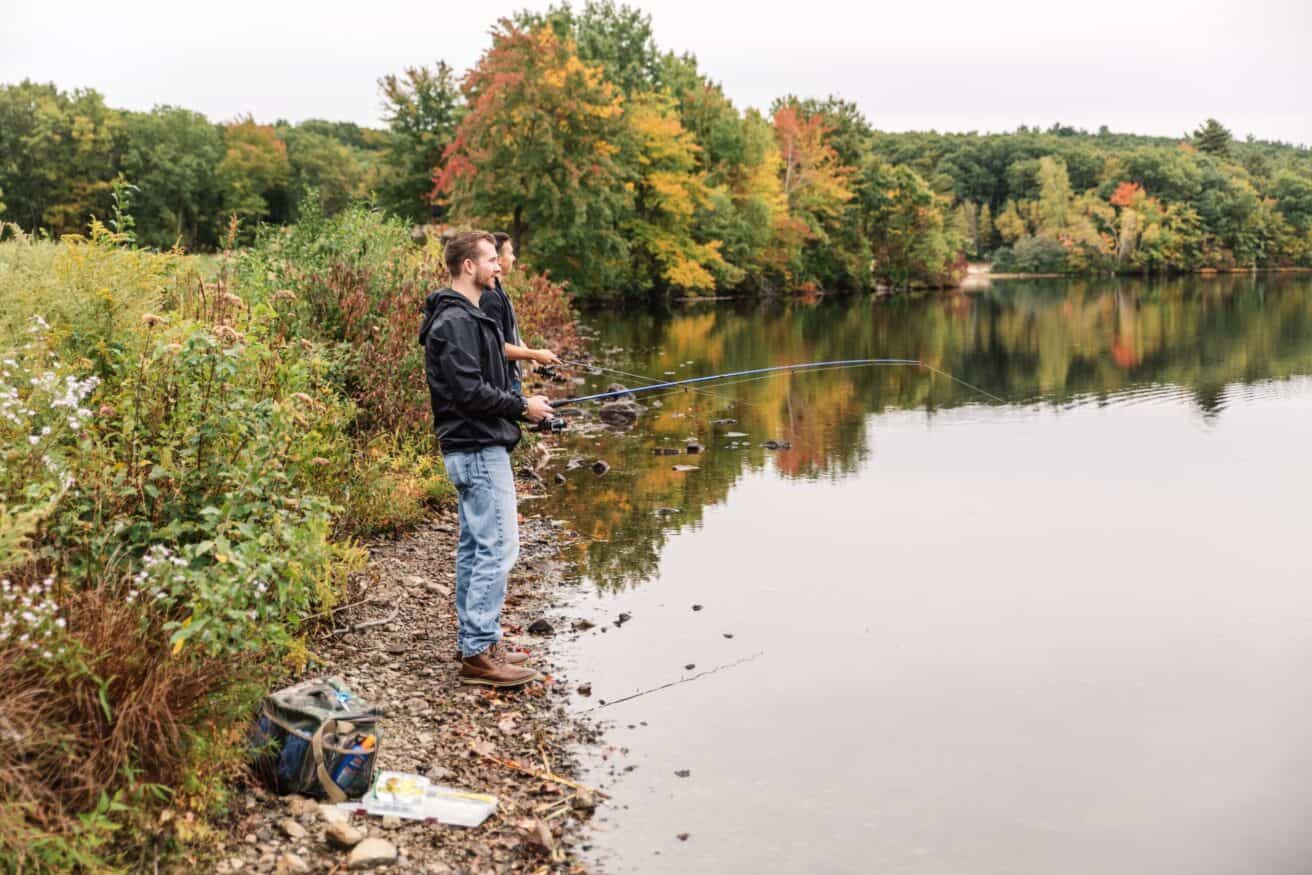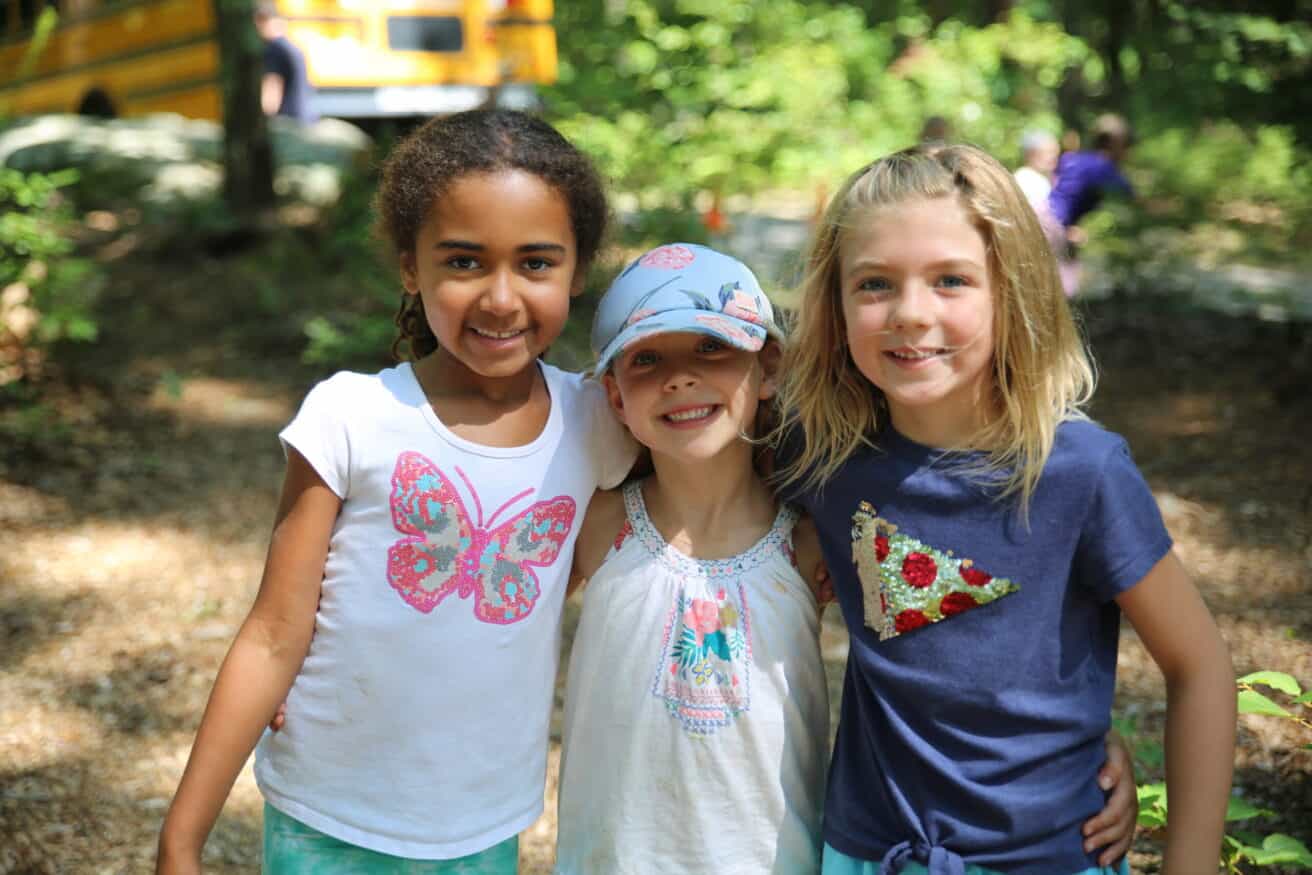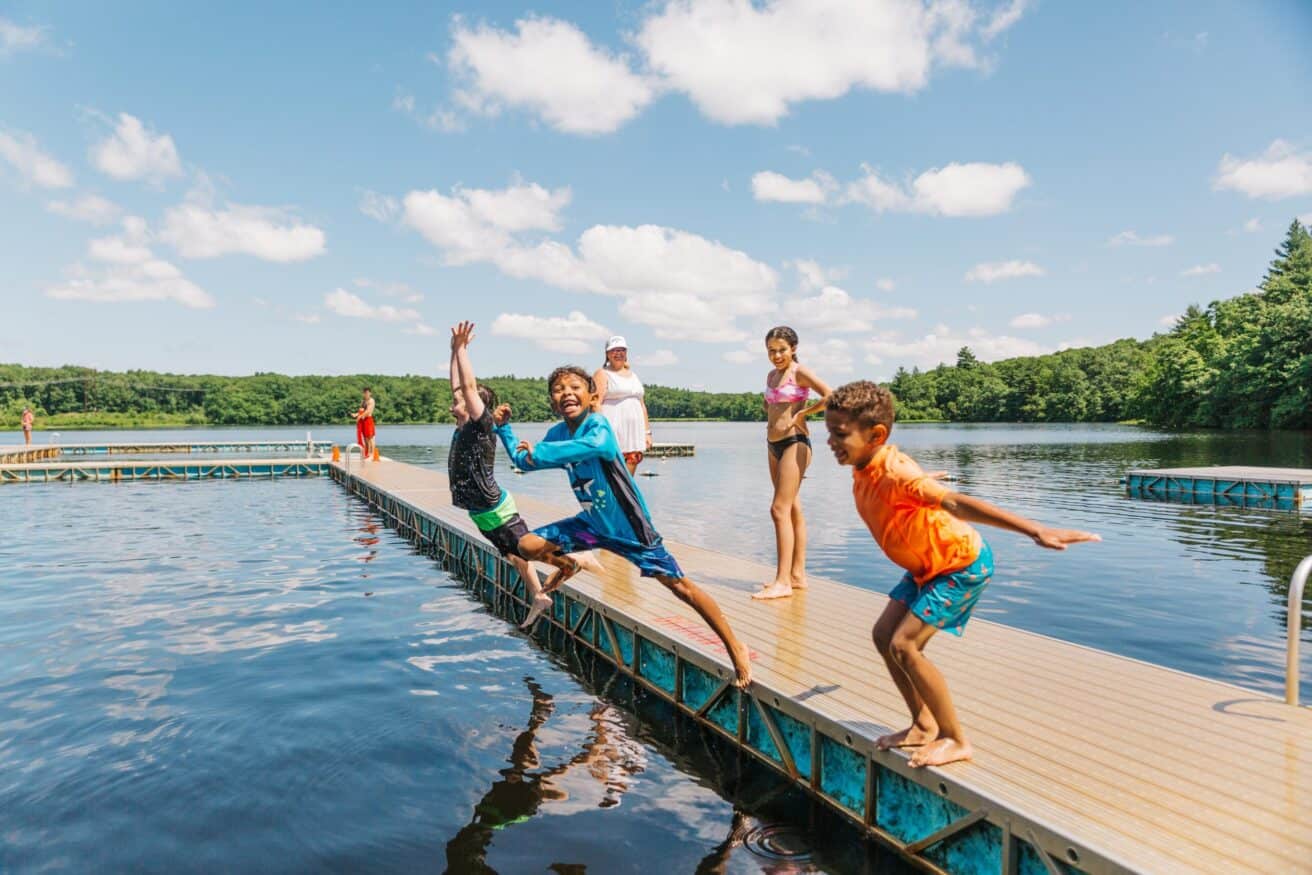Campaign for Kids, Conservation, and Community
We are expanding opportunities for children, ensuring climate resilience, and furthering our ability to serve as a community resource for the region.
For Generations to Come
Hale’s Campaign for Kids, Conservation, and Community will expand programs, improve facilities, protect land in perpetuity, and establish a sustainable endowment. We’re collaborating with our local communities, The Trustees of Reservations, the Dover Land Conservation Trust, and the Westwood Land Trust to permanently protect hundreds of acres from future development.
Hale’s century-long commitment to reimagining learning and building community has never been stronger. Our work has impacted millions of lives and continues to be rooted in the belief that nature, education, and recreation inspire us to learn, empower us to lead, and challenge us all to create a world in which people, place, and purpose are united. It’s with that in mind that we pursue this campaign to impact:
- Children—We’re expanding our nationally recognized camps and summer learning opportunities, growing a year-round outdoor academic academy, and educating more children about climate resiliency.
- Facilities—We’re updating, improving, and constructing 20+ facilities that support programs for children and families.
- Conservation & Sustainability—We’re protecting hundreds of acres of land from future development and investing Hale’s resources to support long-term sustainability.
Hale is raising $38MM from private sources including individuals, foundations, and corporations to support programs, facilities, and conservation. As of the end of March 2024, donors have committed $13.8MM+ with an additional $16.5MM contingent on completing the campaign; currently, Hale is working to raise $7.7MM in additional funds to achieve that goal. To learn more about conservation restrictions and the campaign, see the FAQs below.
Given the timeline of other activities at Hale, including the search for Hale’s next executive director, the campaign will conclude by the end of June 2024. To learn more about the urgency of this effort, see “Why now?” in the FAQs below.
While Hale’s land is priceless, its monetary value is not incalculable, and people are often surprised to learn that it is not protected from development. In the 1950s, our board of directors was forced to consider selling most of the property—much of it to be turned into a gravel pit—to sustain a struggling organization. As recently as three years ago, the federal government’s Paycheck Protection Program spared it from a similar fate during the pandemic.
With this in mind, Hale’s current board of directors has offered to permanently protect the property with a conservation restriction if the land’s financial value can be realized through the campaign’s fundraising efforts.
The financial implications of putting a conservation restriction on the property are described in “Why is this a $38MM campaign?” in the FAQs below.

You Can Help
There are two ways you can act now.
- Serve as an ambassador. To achieve the level of funding required in this short window of time, we need vocal ambassadors to share the story and encourage donors to contribute. Contact us to offer ideas about ways we can fund conservation, or volunteer to host an information session for friends and neighbors and spread the word about what conservation can do for the community.
- Financially contribute to this effort. Hale needs to raise $7.7MM to complete this campaign. Email giving@hale.education if you’d like to support this campaign with a multi-year pledge.
Thank you in advance for your support.
Frequently Asked Questions
All funds will be used to support Hale’s operations and long-term educational mission. Approximately 38% will be designated for an endowment, 31% will be used to repair and upgrade existing infrastructure and facilities (e.g., repairs and accessibility improvements to the welcome center and office, and replacement of bathroom and waste systems at North Beach), and 31% will support operational needs for existing programs. The illustration below depicts the allocated impact of this fundraising.
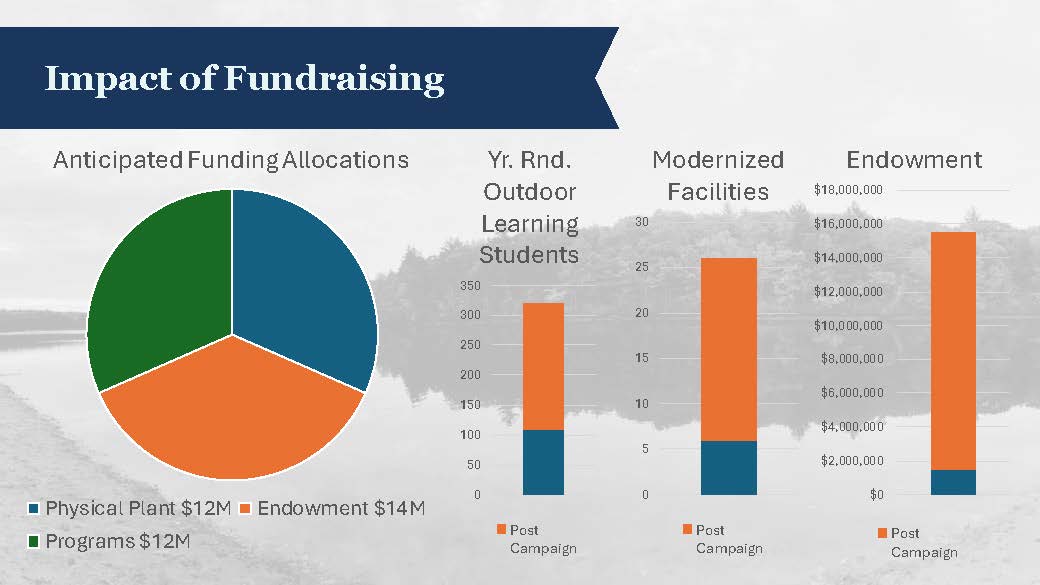
Two reasons determined Hale’s $38MM goal for this campaign:
- A comprehensive wish list of program enhancements and facility upgrades created a framework for future planning. The original list actually exceeded what this campaign could sustain. We prioritized high-impact items, and the exercise reinforced the importance of an endowment. To learn how funds raised will be allocated, see “What impact will the funds raised have on kids and Hale’s future?” in the FAQs.
- The monetary value of Hale’s land (its greatest asset) will decrease once a CR is placed on the property. The image below captures the current total value of unprotected property based on appraisals by the Towns of Dover and Westwood: $91MM. With a CR in place, the residual value of this land is just $30MM, leaving $61MM to be realized through this effort. To make the campaign’s goal more achievable, Hale agreed to “discount” the project by $15MM. It also decided to withhold parcels valued at $8MM from the CR. Hale needs to account for the remaining $38MM through fundraising—which is the campaign’s goal.
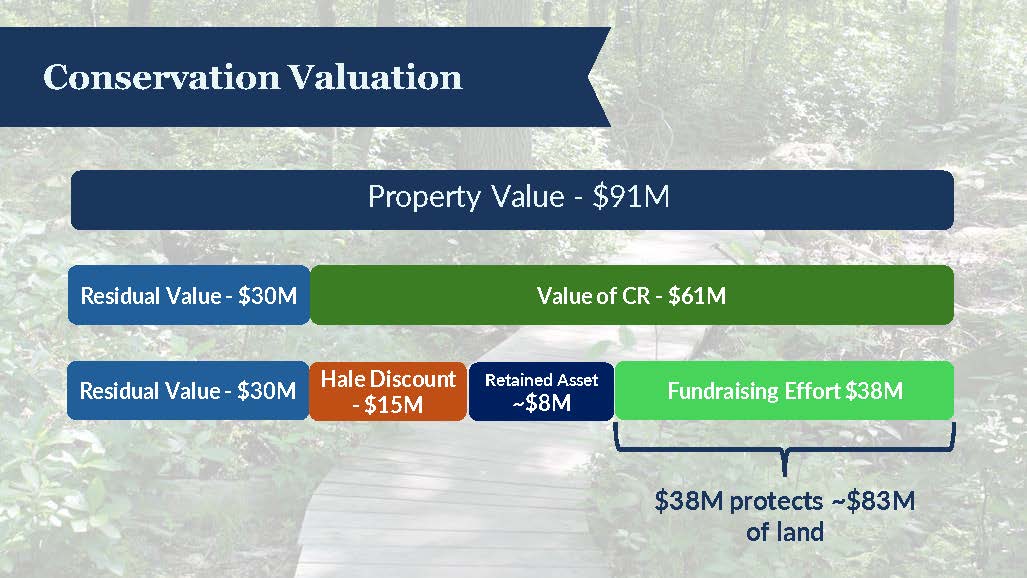
A Conservation Restriction (CR) is a legal tool that permanently limits how privately owned land can be used. CRs typically restrict the development of large parcels of land. A landowner grants a CR to a qualified holder who is responsible for enforcing the CR. In the case of the Hale CR, The Trustees (formerly The Trustees of Reservations) will serve as the holder of the CR.
Conserved land preserves the character of communities. It protects natural open spaces that include watersheds, wildlife habitats, and forests that offer carbon sequestration and mitigate climate change. Outdoor recreation, and the social and physical health benefits it offers, also boosts quality of life.
There are many benefits to placing a CR on Hale’s property.
- Guaranteed Public Access: The Conservation Restriction (CR) will guarantee public access to over 10 miles of trails. Right now, Hale can restrict access however and whenever it wishes. That would not be the case once the CR is complete.
- Property Values: Towns with more open space have higher property values. Regardless of where you live in town, open space in your community increases the value of your property.
- Individual Health: Extensive empirical literature documents the health benefits of nature. The National Library of Medicine has reviewed how nature helps reduce stress, blood pressure, and cortisol levels; boost mood; improve attention and executive functioning; and strengthen immune systems. It has been proven, when nature is in your life, your physical and emotional health improves.
- Decreased Long-Term Costs for Towns: The CR would last forever and eliminate the possibility of residential development on the property. Residential development is known to cost municipalities and public services more than the tax revenue it generates over time. A CR decreases future costs for the town and its taxpayers.
- Enhanced Community Resource: Funding that backs the Hale CR supports a community-based organization whose mission is to provide education and recreation programs for all. The funds will provide better opportunities for the community to enjoy all that Hale has to offer.
For decades, Hale’s land has served as a reserve fund; an endowment in the form of real estate. It has been an asset that provides financial insurance for the organization. The pandemic served as a reminder of how fragile that arrangement is, and the only way to ensure Hale’s acres never get sold is to legally protect them in perpetuity.
Progress during the past five years brings us to why this project must be completed now:
- Discounted Value: Hale has effectively discounted the price for the CR. That same “discount” will not be possible in the future as the land’s value continues to increase.
- Decades of Investment: Hale has dedicated a substantial amount of its own fundraising and administrative resources to make the current CR structure work. Early discussions date back to the mid-1990s, but the high cost of completing such a project made it impossible to pursue. Today’s opportunity is made possible by individual donors and private sector support.
- Philanthropic Momentum: The private sector has recognized the importance of investing in Hale’s programs and facilities and the value of this conservation project. It has stepped up to do its part. The current level of commitment, and momentum gained over many years, will be lost if the campaign is not completed.
- Cooperative Landscape: Today, Hale is a cooperative landowner. Our leadership has engaged in collaborative discussion with the Westwood Land Trust, the Dover Land Conservation Trust, and The Trustees of Reservations to move this effort forward, but there’s no guarantee of continued collaboration if we do not complete this effort now—we can’t predict how future board and staff members might leverage the land.
- Leadership Transition: Hale plans to welcome a new executive director in the third quarter of 2024. To ensure a successful leadership transition, the board has agreed to make that its priority after June 30. If the campaign is not complete by that time, conservation of Hale’s land will no longer be an organizational priority.
Hale’s camps and educational programs have been receiving accolades across the Commonwealth. Even as more educational institutions see the advantages of project-based learning and outdoor education, growing demand does not mean there will be an increase in the number of people at Hale at any given time, especially during the summer.
Hale monitors and limits the number of learners on the property to maintain an optimal outdoor learning environment. Hale’s future plans include spreading programs out over the calendar year by designing more learning opportunities during the fall, winter, and spring.
To implement these program objectives, we need to make some physical plant changes. This does not include new access points to Hale or entirely new camp sites. It does include upgrades to and replacement of older buildings. These older buildings are not accessible for people with disabilities, so we intend to bring them up to code while also making them more welcoming to visitors of all abilities.
The proposed Conservation Restriction (CR) has strict, specific building limits for most of the property. Only small, designated areas can be used for construction, and the CR ensures that the vast majority of the property will be building-free forever. Height and building size restrictions apply to the small portion of that land that can be developed. The final amount of land protected and the portions of the property that will be excluded from the CR will be based on the final fundraising totals.
It is important to note that construction at Hale is expensive. Based on our location, the groundwater discharge permit we have with the state, and our designation as a public drinking water supply, infrastructure for all our buildings can be costly. The funds from this campaign will not provide for any substantial construction at Hale. A more detailed list of projects in the next 5–10 years includes:
- Removal and replacement of an office and old restroom at Hale Day Camp, which will enhance accessibility and provide designated space for the camp nurse.
- Removal and replacement of the Fern Valley Cabin, which will provide a more functional office and food service area to support meals for Hale Outdoor Learning Adventures.
- Removal of the “Food Cabin” at the South Shore Stars site.
- Replacement of the North Beach bathrooms with an updated, accessible restroom that includes a changing area for campers.
- Upgrades to the front entrance that will include a small, accessible welcome center, an education program space, and restrooms. In addition, the offices will be renovated to address accessibility issues, and the front entrance parking area will be reconfigured with ten parking spaces for public access to the trail network.
- Addition of a climbing tower (a challenge course element) at Hale Day Camp.
- Removal and replacement of Cat Rock Pavilion.
- Construction of a pavilion or small cabin near High Rock Lodge and the installation of restrooms.
- A small addition to the Fern Valley Restrooms that would include four showers for overnight program participants.
If a Conservation Restriction (CR) is not put on the property, the land remains vulnerable to development. Hale has made it clear that transitioning its land to an investment endowment to achieve its programmatic and financial goals is a top priority. If the proposed CR is not completed, Hale acknowledges that under new executive leadership, any unprotected land could, at some point, be sold for private development.
The campaign launched with the hope that the municipalities of Westwood and Dover would participate with some funding to purchase the conservation restriction. Due to competing projects and legal complexities, the towns were unable to participate within the timeline for completing the campaign. Hale is striving to accomplish as much conservation as possible with the support of private donors.
Make Your Gift
With $7.7MM to raise by June 30, every dollar counts. Thank you for showing your support for kids, conservation, and community.
